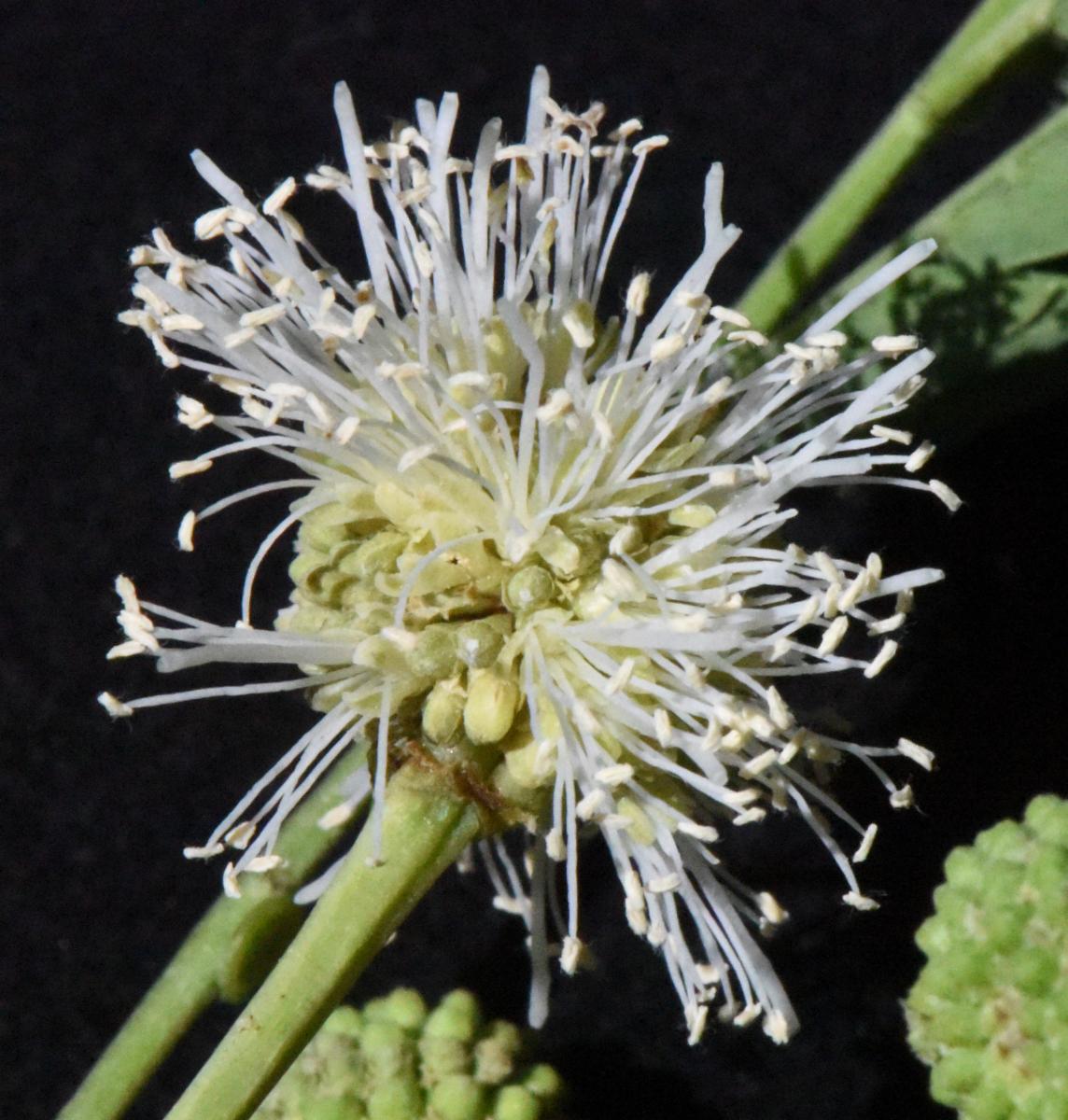White Leadtree
leucaena leucocephala
Also known as: ["Ipil-ipil","White Leadtree"]
Overview
A fast-growing leguminous tree native to the Americas, valued for forage, timber, and soil improvement.
Benefits & Perks
["fast growing","drought tolerant","wildlife attractant (bees, butterflies, birds)"]
Botanical Classification
| Phylum: | Magnoliophyta |
| Class: | Magnoliopsida |
| Order: | Fabales |
| Family: | Fabaceae |
| Genus: | Leucaena |
| Botanical Name: | Leucaena leucocephala |
Plant Characteristics
Basic Information
- Category: Trees
- Suitable Location: outdoor garden in tropical or subtropical regions
- Suitable For:
- Is Weed: No
- Allergenicity: moderate
Environmental Needs
- Climate: {"temperatureRange":"15–40°C"}
- Hardiness: {"zones":"9–11"}
- Misting: rarely required, only if ambient humidity is very low
- Drainage: Fast-draining to prevent root rot.
- Soil Type: Well-draining, loamy soil with organic matter; tolerates poor soils.
Maintenance Level
- Maintenance Level: low
- Toughness Level: high
- Pruning Frequency: Annually in spring; light pruning can be done as needed.
- Pruning Intensity: Moderate; remove up to one-third of growth if overgrown.
Care Details
Ideal Sunlight Coverage:
Full sun (6–8 hours/day); tolerates partial shade but may reduce flowering.
Sunlight Tolerance Tips:
Acclimate new plants to full sun gradually; protect from intense midday sun in hot climates; ensure good air circulation to prevent sunburn.
Care Requirements
Care Difficulty
easymoderate
Sunlight
full sun
Rotate plant for even light; use shade cloth in extreme heat; avoid direct sun on leaves during peak hours.
Watering
every 7–10 days during dry periods, less frequently in rainy seasons
Water thoroughly until runoff, allow soil to dry partially between waterings, avoid waterlogging.
Soil
well-drained, sandy or loamy soil
pH: 6.0–7.5 (slightly acidic to neutral).
Ensure good drainage; avoid heavy clay; amend with organic matter.
Temperature
Thrives in 20–35°C; tolerates 10–40°C; prefers warm, tropical conditions.
Protect from frost; avoid sudden temperature swings; ensure good air circulation.
Fertilizing
every 2–3 months during active growth with balanced fertilizer
Fertilize lightly; avoid over-fertilization; apply to moist soil to prevent root burn.
Propagation
Methods
Stem cuttings or seeds; stem cuttings are faster and more reliable.
Step-by-Step Propagation Guide
- Take 4–6 inch cuttings.
- Remove lower leaves.
- Apply rooting hormone.
- Plant in medium.
- Maintain humidity.
Best Time: Spring or early summer when growth is active.
Environment
High humidity (70–90%), warm (24–30°C), indirect light.
Medium
Well-draining mix of perlite and peat moss or cactus mix.
Hormone
Rooting hormone recommended for faster rooting.
Timeline
Roots in 4–6 weeks; establish in 3–6 months.
Tools Needed
Pruners, rooting hormone, propagation tray, humidity dome.
Quick Tips
Use healthy, non-flowering stems; keep consistently moist; provide bottom heat for faster rooting.
Pruning & Repotting
Pruning Guide
Method
Thinning cuts to open canopy; heading back to encourage branching.
Pruning Plan
Shape plant, remove dead/diseased growth, encourage bushier growth; best done in spring.
Tools
Pruning shears, loppers, gloves.
Checklist
Sterilize tools; prune dead/diseased wood; make clean cuts; dispose of clippings.
Repotting Guide
Best Season
Spring before active growth begins.
Pot Size
One size larger pot; ensure drainage holes.
Method
Remove plant gently; trim roots if needed; use fresh soil mix; ensure good drainage.
Suggestions
Repot every 2–3 years or when roots fill container; beneficial for growth and health.
Checklist
Choose appropriate pot; prepare new soil; water before repotting; place in shade for recovery.
Advanced Care Tips
Watering Mastery
Watering Checklist
Check soil moisture with finger; water deeply; ensure drainage; adjust seasonally.
How to Apply Water Properly
Water at the base of the plant, ensuring moisture reaches the root zone; water early morning or late evening to minimize evaporation; ensure excess water drains away.
Watering Schedule Tips
Water deeply once per week during active growth; reduce frequency to every 2–3 weeks in winter or drought; adjust based on rainfall and soil moisture.
Soil Improvement
Add compost or aged manure for fertility; mix sand or perlite for drainage; use mulch to retain moisture.
Temperature Stress Management
Signs of Temperature Issues
Chlorosis or leaf drop in cold stress; wilting or scorching in excessive heat.
Cold Stress
Growth slows or halts below 10°C; prolonged cold can cause dieback or death.
Solution: Provide frost protection; move to a warmer location; use mulch to insulate roots.
Hot Stress
Leaves may wilt, scorch, or drop; growth may slow under prolonged heat.
Solution: Provide partial shade; increase watering; use mulch to retain soil moisture.
Fertilizing Guide
Fertilizing Checklist
Use balanced fertilizer; apply during growing season; water after fertilizing.
Fertilizing Method
Use balanced, slow-release fertilizer in spring; dilute liquid fertilizer to half-strength monthly during growing season; avoid fertilizing in winter.
Common Problems & Solutions
Toxicity Warning
Cats
ToxicCats are also susceptible to the toxic effects of mimosine in Leucaena leucocephala, which can cause severe gastrointestinal upset, metabolic imbalances, and neurological symptoms. The plant should be kept out of reach of cats.
⚠️ Symptoms:
🌿 Toxic Parts:
⚡ Toxic If:
if eaten
Dogs
ToxicThe mimosine content in Leucaena leucocephala is toxic to dogs, leading to gastrointestinal distress, metabolic disturbances, and potential neurological issues. Prolonged exposure may result in severe health complications.
⚠️ Symptoms:
🌿 Toxic Parts:
⚡ Toxic If:
if eaten
Humans
ToxicLeucaena leucocephala contains mimosine, a toxic amino acid that can cause severe physiological effects, including goiter, hair loss, and neurological damage upon prolonged or excessive ingestion. The plant's seeds and pods are particularly concentrated in this compound.
⚠️ Symptoms:
🌿 Toxic Parts:
⚡ Toxic If:
if eaten
Frequently Asked Questions
Q: Is Leucaena leucocephala toxic to pets?
A: Yes, it is toxic to dogs and cats.
Q: What are the uses of Leucaena leucocephala?
A: It is used for forage, timber, and as a soil improver due to nitrogen fixation.
Q: Is Leucaena leucocephala invasive?
A: Yes, it is considered an invasive species in many regions outside its native range.
Quick Reference
| Family: | Fabaceae |
| Care: | easy |
| Light: | full sun |
| Water: | every 7–10 days during dry p |
Get Expert Care Tips
Download the Plantious app for personalized care reminders and plant identification!
Google Play App Store








